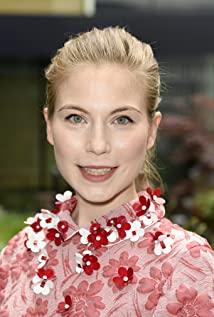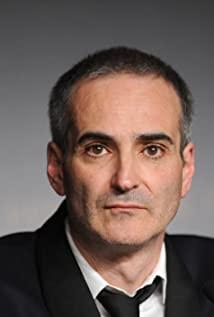I like the movie "The Cloud of Sils Maria" not only because its story cannot help but remind me of my 2014 top ten list of "Birdman", but also because of the contrast between art and reality. Opposition is always my favorite theme. In the process of watching the movie, I always feel that the loose narrative seems to be mixed with countless literary and cultural symbols, and it is the audience's duty to find these symbols and decipher them. So I started with the names of the two heroines in the drama "Snake of Maloja" in which the heroine Maria Enders participated twice: Sigrid and Helena-common in Northern Europe The female name Sigrid (also similar to the feminization of the protagonist Sigurd/Siegfried in the classic hero legends of Northern Europe and Germany), as well as Helen in Homer’s epic poem, the opposition between the north and the south, the strong and rugged north and An ancient southern country exhausted by being too civilized. I think Nietzsche spent 7 summers in a hut in Sils Maria, and even a famous poem dedicated to this place is included in "The Science of Pleasure"—all these make me feel a metaphor. The red line is ready to emerge: Just like Nietzsche and the popular cultural concepts of his time, the ancient and weak southern civilization needs to obtain new vitality from the harsh and barbaric north. The older woman Helena in "Maloya Snake" is energetic The young girl Sigrid attracts and is dying because of her inability to obtain such vitality (to keep Sigrid). Correspondingly, the middle-aged actress Maria in the movie reality confronts the young assistant Verontin and 19 The year-old star Joanne Ellis disdains the complex emotions that he admires on the other hand. I even thought that this was such a "mirror-like" movie. The ingenious correspondence between characters and characters, plot and plot created an interesting artwork.
But it is interesting to think so, but it fell into a trap designed by director Assaya. I guess he deliberately buried a few “symbols” that looked like keys in the movie, attracting pretentious audiences to find “hidden meanings”. Look, after the last quarter of the story, Assaya used the mouth of Li Weilunting to say to Maria: The article is like an object, viewed horizontally as a peak on the side of a ridge. And Maria’s “I don’t know” made me feel complacent about the culture and vitality for a long time. Isn’t it the same as Maria who stubbornly claims that no one understands "The Snake of Maloja" better than herself. Maria clings to her interpretation of the script when she first appeared in this play 20 years ago, as if she could erase the 20 years of youth that passed during this period. She believes that she can only be Sigrid , Young and beautiful, as if as long as she fixed herself in the role of Sigrid, as an actor, she could avoid going downhill helplessly like Helena. Obviously, this understanding is made through the subjective perspective of Maria herself as an actor who has reached the pinnacle of her career at the age of 40. She obviously cannot play the role of Helena with this understanding. Other characters in the movie have different opinions on the play and the characters. For example, the young assistant Verontin sees Sigrid’s arrogance and cruelty, and Helena’s humanity and pain; the old actor Henrik sees What is here is the interest relationship between the two female characters; as for the audience, compared to the play itself, they are more concerned about the gossip of the actors. Like 20 years later, Maria has changed from Sigrid to Helena, like the troubled girl Joanne, who destroyed other people’s families and forced her lover’s wife to commit suicide. Compared to a play by a dead writer who has been forgotten for 20 years, these hot news are more like the first full-blown. s reason. As far as the audience/reader of the play is concerned, every method of interpretation makes sense, and even going to the theater to see the stars is what the theater director hopes. The only thing that is unreasonable is that the actors-one of the creators of the art of theatrical performance-look at the work with too monotonous and restricted eyes. I think an artist should try his best to show all aspects of the work, allowing the audience to choose the aspects of their concern, so as to generate their own understanding.
Assaya may be a reader of Susan Sontag. In the prose "Against Interpretation", the latter explored the viewpoints of taking content as essence and taking form as ancillary in art appreciation in the past, believing that too much entanglement in interpreting the content of artworks will lead to endless interpretation. Lost in projection; too much emphasis on the role of interpretation will make art functional, that is, use the framework of reality and morality to limit the artwork, and weaken the art into a projection and appendage of reality, rather than a free object that aims at itself and beauty (Just like Verontin said, an "object"). Sontag believes that when appreciating artworks, it is important to restore our feelings. "We must learn to see more, listen more, and feel more. Our task is not to discover a lot of content in works of art, nor to extract more content from works that are already clear. We The mission is to weaken the content so that we can see the work itself. "The
beauty of the artwork is more important than the content. Clouds and snakes may be called works of nature. Looking at the sly clouds in the mountains, you can just sigh the wonderful writing of the sky, and you don't need to interpret this grand scene as a sign of rain or a life of ups and downs. The play is called "The Snake of Maloja" and the movie is called "The Cloud of Sils Maria". It is not to remind readers that instead of entangled in the truth in the clouds and lost in the clouds, it is better to sit on the cliffs. Go up, wait and wait aimlessly, enjoy the light for a while, enjoy the darkness for a while, savor the time of games, clouds and beauty, and look at the ins and outs.
PS But I guess Nietzsche still gave Assaya a little inspiration. The poem called "Sirs Maria" is written like
this : I sit here, waiting, waiting-aimlessly,
the other side of good and evil,
I enjoy the light for a while, and the darkness for a while,
It's all games, sea, noon, aimless time,
suddenly, my girlfriend is here! One changed to two,
Zarathustra passed me by... (Huang Mingjia's translation)
View more about Clouds of Sils Maria reviews











